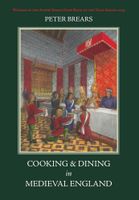The Pantry
By Peter Brears
Published 2008
Having completed this survey of the ‘wet’ area of the butler/pantler’s domain, the ‘dry’ areas will now be considered, starting with the pantry of the middle to late fifteenth-century royal household.41
This department was controlled by a sergeant called the chief panterer to the King’s mouth. His was a largely administrative post, responsible for taking delivery of the bread by tally from the bakehouse each morning, reporting the quantity to the counting house, while his yeoman brever separately reported how many loaves were actually distributed each day, to ensure that none was wasted or stolen. The practical work was undertaken by three yeomen panterers, two grooms and two pages, who brought in the loaves from the bakehouse cart, stored them in clean bread-bins, pared them for use, and packed them in containers called porters in which they were delivered to the hall and chamber. They also made salts for the hall, these probably being identical to those made for Archbishop Neville, salt spread over a square bread trencher with a knife, then cut into four (square) pieces.42 A separate page for the mouth prepared the loaves for the King’s use, and carried his porter up to the chamber.
Become a Premium Member to access this page
Unlimited, ad-free access to hundreds of the world’s best cookbooks
Over 160,000 recipes with thousands more added every month
Recommended by leading chefs and food writers
Powerful search filters to match your tastes
Create collections and add reviews or private notes to any recipe
Swipe to browse each cookbook from cover-to-cover
Manage your subscription via the My Membership page
Part of
Advertisement
Advertisement


